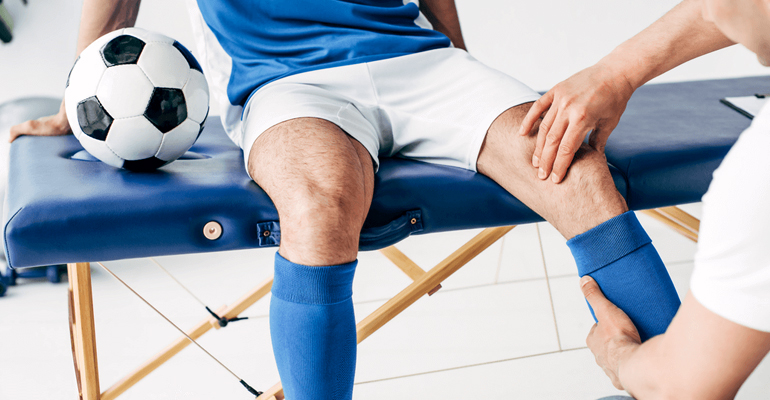-
-
+91-8591556577
-
Sports Injuries

Sports Injuries
Sports injuries occur when engaging in physical activities, whether in professional sports, recreational play, or fitness exercises. These injuries can affect various parts of the body, including muscles, joints, bones, and connective tissues, often leading to pain, limited mobility, and time away from the sport. Proper diagnosis and treatment are essential for a full recovery and preventing long-term damage.
Common Types of Sports Injuries
- Sprains and Strains: Sprains involve stretching or tearing of ligaments, commonly in the ankles, while strains are the overstretching or tearing of muscles or tendons.
- Fractures: Bone fractures are common in contact sports and high-impact activities. Stress fractures, tiny cracks in the bone, often occur from overuse.
- Dislocations: This occurs when bones are forced out of their normal position in a joint, most commonly in the shoulder, knee, or fingers.
- Tendonitis: Inflammation of tendons, often due to repetitive motion, can cause pain in areas like the knee, shoulder, or elbow (e.g., tennis elbow).
- Knee Injuries: Knee injuries such as ACL (anterior cruciate ligament) tears, meniscus tears, and patellar tendonitis are common in sports that involve running, jumping, or sudden stops.
- Shin Splints: Pain along the shinbone (tibia) caused by overuse or repetitive stress, often experienced by runners.
- Concussions: A type of traumatic brain injury caused by a blow to the head or body, leading to symptoms like dizziness, headaches, and confusion.
Prevention of Sports Injuries
- Warm-Up and Stretching: Proper warm-up and stretching routines before activity help prepare muscles and joints for physical exertion, reducing the risk of injury.
- Use of Protective Gear: Helmets, pads, braces, and other protective gear can prevent injuries in contact sports and high-risk activities.
- Strength and Conditioning: Building muscle strength and endurance can support joints and reduce the chance of strains or sprains.
- Rest and Recovery: Overtraining without adequate rest can lead to overuse injuries. Incorporating rest days allows the body to recover.
- Proper Technique: Learning and using proper techniques in sports activities, from running to lifting weights, can help avoid injury.
Treatment Options for Sports Injuries
Our clinic offers comprehensive treatment and rehabilitation for all types of sports injuries, focusing on recovery and getting you back to the activities you love.
- Rest, Ice, Compression, and Elevation (RICE): This immediate treatment helps reduce pain, swelling, and inflammation in minor injuries.
- Physical Therapy: Tailored rehabilitation programs to strengthen the affected muscles, improve flexibility, and restore joint function.
- Medications: Anti-inflammatory medications and pain relievers may be prescribed to manage pain and reduce swelling.
- Bracing and Support: Braces, splints, or wraps may be recommended to immobilize the injured area and promote healing.
- Minimally Invasive Surgery: For severe injuries like ligament tears or fractures, arthroscopic surgery may be necessary to repair damage with minimal recovery time.
- Rehabilitation Programs: Post-injury rehabilitation is key to regaining strength, flexibility, and range of motion. We offer personalized programs to ensure a full recovery.
Rehabilitation and Return to Play
The goal of rehabilitation is to restore function and performance. Our sports injury rehabilitation program focuses on:
- Strength Training: To rebuild muscle strength and stability.
- Flexibility Exercises: To regain full range of motion in the injured area.
- Sport-Specific Training: Gradually reintroducing sport-specific movements to ensure the body can handle the demands of your activity.
- Injury Prevention Education: Teaching proper techniques and injury prevention strategies to reduce the risk of re-injury.
